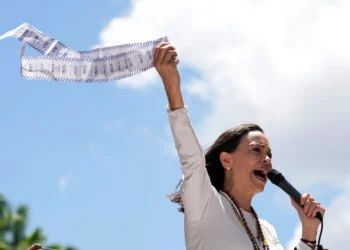An expert mission from the World Health Organization (WHO) investigating the origins of the COVID-19 pandemic in China has failed to identify the source of outbreak, but ruled out the theory that the virus was leaked from a Chinese lab.
The mission also said that the coronavirus is more likely to have jumped to humans from an animal and it is yet to identify the animal source.
WHO food safety and animal diseases expert, Peter Ben Embarek made the assessment at the end of a visit to the central Chinese city of Wuhan, where the first cases were discovered in December 2019.
“Our initial findings suggest that the introduction through an intermediary host species is the most likely pathway and one that will require more studies and more specific targeted research. However, the findings suggest that the laboratory incidents hypothesis is extremely unlikely to explain the introduction of the virus to the human population.”
Peter Ben Embarek

The Wuhan Institute of Virology in central China has collected extensive virus samples, which led to allegations that it may have caused the original outbreak by leaking the virus into the surrounding community.
Liang Wannian, an expert with China’s National Health Commission, also told reporters in Wuhan that the joint Chinese and WHO team of 34 experts believe the virus originated in an animal, “but the reservoir host remains to be identified.”
Liang said there was no evidence to suggest it spread in the city before the first official cases were recorded in December 2019. He also went on to suggest the virus could have been circulating in other regions before it was identified in China.
A literature review of research that included “unpublished studies from different countries, suggest that SARS-Cov-2 circulation preceding the initial detection of cases by several weeks,” he said.
“Some of the suspected positive samples were detected even earlier than the first case reported. This indicates the possibility of the misreported circulation in other regions.”

The WHO team’s mission is intended to be an initial step delving into the origins of the virus, which is believed to have originated in bats before being passed to humans through another species of wild animal, such as a pangolin or bamboo rat, which is considered an exotic delicacy by some in China.
Embarek said the absence of bat environments in Wuhan indicated that it is unlikely the virus was transmitted directly from bats to humans. He also noted that transmission through frozen products was also a possibility.
The team from 10 different nations has visited hospitals, research institutes, the traditional wet market tied to the outbreak and other sites.
Their visit took months to negotiate after China only agreed to it amid massive international pressure. Beijing has continued to refuse appeals for a strictly independent investigation.
British-born zoologist, Peter Daszak, however revealed the team has enjoyed a greater level of openness than they had anticipated, and that they were granted full access to all sites and personnel they requested.























